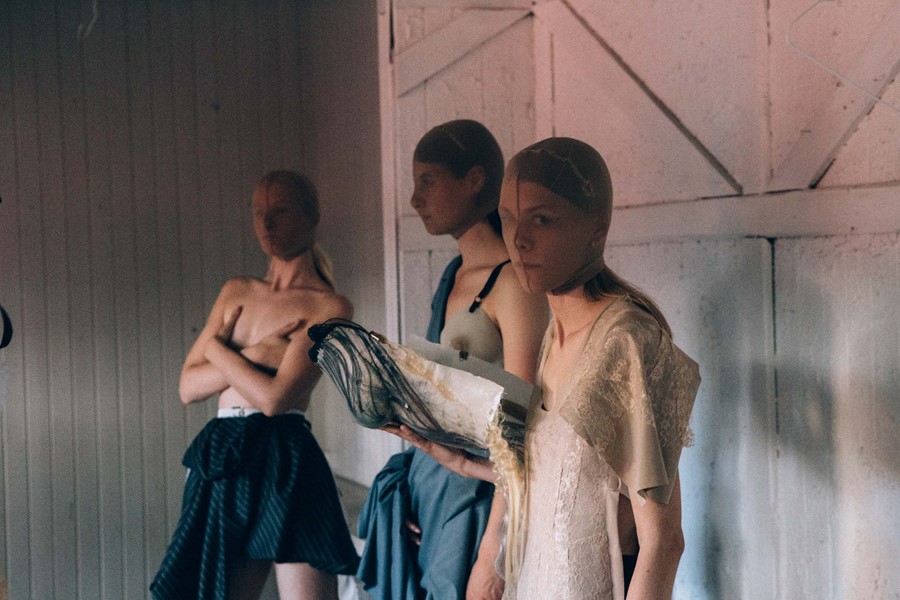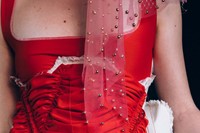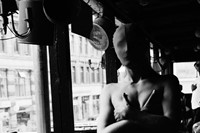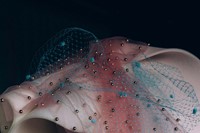Anne Karine Thorbjørnsen’s unconventionally sensual designs were recently displayed in an exhibition in Oslo, Norway
- Who is it? Anne Karine Thorbjørnsen is a Norwegian designer making slow, thoughtful clothes away from fashion’s rigid seasonal calendar
- Why do I want it? Sensual and meticulously crafted pieces that subvert prescribed ideas of masculinity and femininity
- Where can I buy it? You can shop Anne Karine Thorbjørnsen via the designer’s website.
Who is it? The concept of isolation is not unfamiliar to Anne Karine Thorbjørnsen, who moved to a small farm outside of Oslo in January this year. “I was lucky as lockdown didn’t really change much in my daily routines,” says the designer, whose studio is also based in the remote location. The slower, introspective nature of the last few months is something Thorbjørnsen is familiar with too, having stopped designing collections in accordance with fashion’s rigid seasonal calendar in October 2019. “Each season I found myself with less and less time to develop ideas and to create, due to demands and deadlines from the industry,” she says. “Continuously stressing towards the next deadline killed the joy. So I quit, and paused, and recharged onto a different path.”
Having studied fashion in Denmark, Thorbjørnsen went on to complete a BA, then MA, in womenswear at Central Saint Martins – she completed the latter under the tutelage of the late Louise Wilson. Initially, her dream was not to start her own brand, but to work for one of her heroes: Martin Margiela. “I wrote three cover letters and never heard anything back,” she recalls. “So I decided to just start on my own.” Under her namesake label – which she approaches as a “practice”, rather than a label – Thorbjørnsen creates beautifully unconventional womenswear which challenges prescribed ideas of masculinity and femininity.
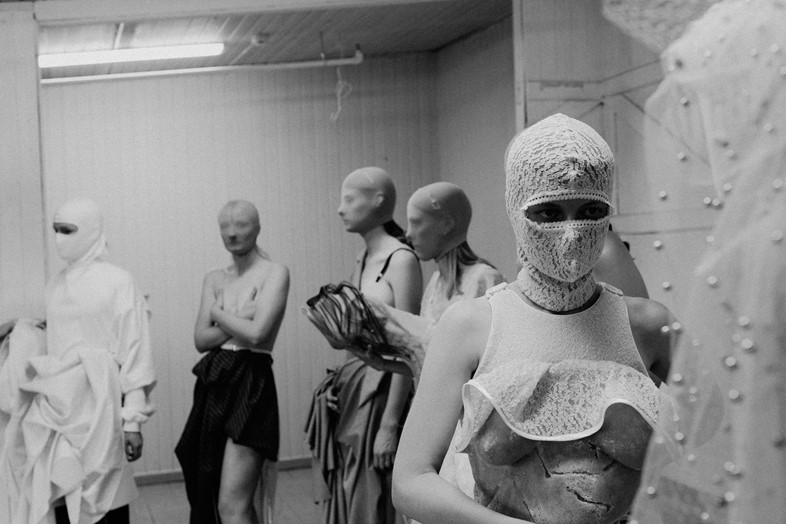
Working obsessively with styles and fabrics imbued with gendered symbolism – such as pinstripes and tailoring, lace and drapery – Thorbjørnsen remoulds elements of traditional dress into something entirely new. “The female and perceptions of femininity have been at the core of the practice since I started out in 2012,” she says. “I have always felt an uneasiness towards mainstream female representations and expectations on how to be a woman or how to be feminine.” In the designer’s hands, styles associated with archaic notions of girlhood and the feminine – such as the corset, or the “dangerously cute” colour of baby blue – are cleverly subverted and directed away from the male gaze. Thorbjørnsen describes this as giving these styles “a new belongingness”.
In lieu of a collection, Thorbjørnsen spent this year working towards an exhibition at Salgshallen gallery in Oslo, entitled No title. Work(s) in progress, which ran for three weeks in June (the show was delayed from March, due to coronavirus restrictions in the country). The designer says that though at first disappointing, the break was something of a blessing in disguise: “[I] returned to it with new energy and the work developed into a more interesting piece, I think.” Part-fashion show, part-performance piece, the exhibition’s opening night saw Thorbjørnsen explore seven of her “obsessions” – which she titled The Scrunch, The Pinstripe, The Suit, MMM, The Lace, Baby Blue, and Hyperfemi – each of which were worn by seven models who walked through the gallery space, one by one turning from model to “art technician” by undressing and hanging the pieces up for the audience to see.
With time to reflect and recalibrate, the show was the product of a slower, more thoughtful process afforded Thorbjørnsen by abandoning the restrictive churn of the seasonal calendar. The designer describes it as an “introspective” – an exercise in looking inward at her own practice. “Reflecting on it now, it is touching on time and space,” Thorbjørnsen says. “To make time and space to be able to create, not simply reproducing ideas. Slowing down to make stronger work. Stepping off the treadmill.”

Why do I want it? Though the pieces from Thorbjørnsen’s show are all one-off creations made solely for the exhibition, you can still shop her wares via her website, where the designer’s “obsessions” of tailoring, drapery and hyperfemininity are evident in every piece. Thorbjørnsen traces her fascination with these ideas back to her days as a student: “When I discovered my obsession with drapery on my MA I worked to change what I associated it with; frivolous ornamentation and fluff, too pretty for its own good,” she says. “I find drapery so heavily linked to the female body, to a certain prehistoric male gaze … I saw it up on a pedestal, untouchable, unreachable, and felt a need to pull it down to the ground.” Through her careful reworking of the technique, her decadently scrunched, offbeat drapery achieves a contemporary sort of sensuality, removed from associations with too-sweet girlishness or frivolity.
Unconventional also is Thorbjørnsen’s approach to the suit, a style tied up with codes of masculinity. “The skill of tailoring thrills me, how it is built up and constructed, so meticulously, neat and precise,” she says. “How the suit gives an allure of power and authority, and can feel empowering to wear.” By working her signature soft drapes into her tailoring, the designer aims to shift the suit’s “traditional territory” away from the realm of masculinity. “The suit is so recognisable as a male outfit, but I want to wear a suit as a woman, not as a woman wearing menswear,” the designer explains. Such a shift was seen in the Oslo exhibition, where Thorbjørnsen presented a marl-grey suit with sweeping, floor-length folds which covered only half the torso, exposing a moulded “boob bra” on one side.

The life-like “boob bra” was just one of many pieces which mimicked body parts in the Oslo show, which elsewhere saw finger earrings (complete with french tip nails), moulded hand bracelets, and a sculpture-like body piece infused with long hair. The latter was part of a look which paid homage to Thorbjørnsen’s “continuous source of reference” Martin Margiela, who was also nodded to in the masked faces of the models. Added to the show during lockdown, these surreal body part pieces display Thorbjørnsen’s consciousness of the body, and a sensitivity toward its relationship with clothing – hands and fingers evoked the making of the garments, while the breast pieces played on notions of dressing and nudity.
Looking to the future, the designer has no strict plans to return to making seasonal collections, though she hasn’t ruled it out. “I am still unlearning and learning ways to practise and work to make it a sustainable practice for me, where I can be true to the values that are important, that the content is the work, not the wrapping of it,” she says. “It’s not saying I’m not making collections anymore. I am doing things on my own terms.”
Where can I buy it? You can shop Anne Karine Thorbjørnsen via the designer’s website. All pieces from the No title. Work(s) in progress exhibtion are available to buy via Salgshallen gallery.
